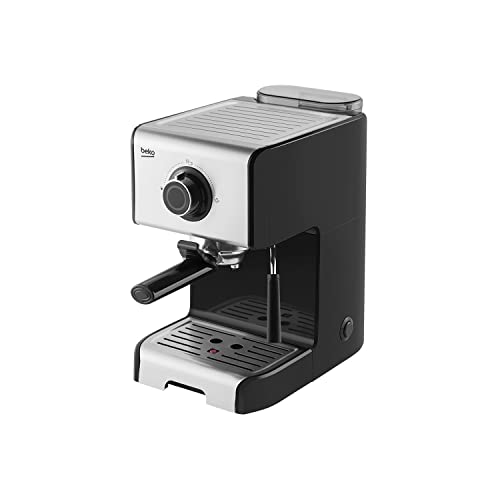How to Properly Maintain Coffee Espresso Machines
When choosing a coffee machine there are some essential things to think about. There are a variety of options based on your budget and preference.
Espresso machines allow you to regulate key aspects like pressure and water temperature. Some espresso machines come with dual boilers which allow you to steam the milk and concoct the coffee at same time.
Cost
A coffee maker and espresso machine is a major investment, but it will be worth it in the long term. You can make your own espresso, as well as other specialty drinks at home. You'll not only save money, but also avoid waiting in line in a café, which will save time and fuel.
Espresso machines are available in a variety of sizes and shapes, based on the level of automation. Some models have an electric pump which does the majority of the work. The most popular models come with steam wands for heating and frost milk, as well with a large drip tray.
The pressure gauge located on the front of your machine will inform you the operating pressure of the boiler and pump. It is important to check this gauge regularly to ensure that the machine is working properly.
The majority of espresso machines work with coffee grounds as well as coffee pods. However, most people prefer to use fresh ground beans. Coffee pods on the other hand, are pre-packaged. They may not allow you to control the quality of your coffee. The choice is ultimately up to you, however when you decide to go with grounds over pods, it is important to keep in mind that they will become more expensive over time.
Convenience
A espresso coffee maker can be used to make all of your favorite espresso drinks. The model you choose, the machine can also be used for Latte art and other unique drinks. An espresso maker can help you save money since you don't have to pay for coffee shops.
Espresso machines can be made either with coffee grounds or pods. Grounds can be more flavorful and provide greater flexibility, but require an extra effort to prepare, since you'll have to measure the amount of beans and then grind them finely by hand. Pod-based espresso machines are easy to use but do not produce as much flavor as espresso made from ground beans.
If you want to eliminate some of the work involved in preparing your coffee look into a semi-automatic coffee maker that can be programmed for specific times. You can set the timer, and then let the machine to make your coffee while you are doing other things. If you're planning to make more than one cup at a time, consider a dual boiler model that has two separate boilers for steaming and the brewing.
You can also select a capsule-based espresso machine, which is the most convenient option. They come with pre-packaged espresso capsules and also have a reservoir for water which you must fill. There are even models with built-in milk fothers and removable, dishwasher safe milk hoppers.

Quality
When properly utilized when it is properly used, espresso machines can create coffee that is full of flavor and aroma. The quality of coffee is influenced by a variety of factors, including the size and temperature of the ground. If the grind is too coarse the water flows too quickly and the aroma is unable to be absorbed. A coarse grind will result in a weak beverage that is bitter or bland.
Contrary to regular coffee makers that make use of gravity to pull water through ground beans in a filter espresso machines use high pressure to force hot water rapidly through tightly packed and finely ground grounds of coffee, resulting in the intense flavor of an espresso shot. This method can be used to make regular less robust coffee that tastes equally delicious.
The quality of an espresso also depends on the size and quality of the portafilter, where the brewed espresso and steam are pulled into the cup. It is important to choose the right portafilter since it can affect the consistency of espresso as well as steam.
Automated espresso machines brew at the push of a switch and are typically programmable to create drinks of different sizes. Semi-automatic espresso machines and manual espresso machines let the user control different aspects of the brewing procedure like when to cut the shot or the amount of pressure applied to grounds. They generally require more maintenance, however they can offer the best quality in our Lab tests.
Maintenance
The cost and convenience of coffee espresso machines is appealing to many businesses, however the quality and flavor of their products are contingent on how well they're maintained. A regular cleaning schedule for these small machines will ensure that they continue to offer high-quality drinks and shots for many years.
Daily maintenance starts with emptying the drip tray which collects espresso and milk residue after every use. Based on the use you make and the type of machine you have, this can be done as often as every other day. You also need to clean the portafilter, group head, and water screen regularly. These parts are prone for grime buildup, which can lead to poor extraction and rancid flavors.
The weekly cleaning chores include cleaning the steam tip, portafilter and group head using a soft nylon toothbrush. It is also recommended to rinse the drip tray and dreg drawer, and wipe down the buttons and gasket for the head with an non-abrasive cleaner. Business owners should soak their items such as the drip tray and gratings overnight in accordance with the manufacturer's instructions.
Certain manufacturers recommend descaling their products on a monthly basis, however the frequency of descaling will depend on the hardness of your water supply and how often you use your device. The reservoir should be filled with the descaling fluid, following the instructions provided by the manufacturer.
